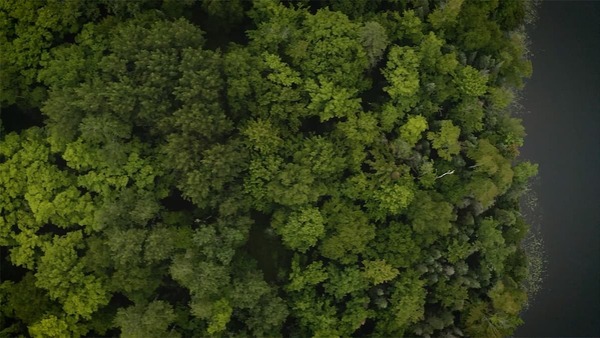A picture of drought
ND ecologist matching NASA images with field data to measure forest health
Nate Swenson strides so quickly through the Wisconsin forest while carrying a large pole clipper that postdoctoral researcher Vanessa Rubio usually follows the 40 feet of rope dragging behind him.
When they reach the designated plot, Swenson extends the clipper about 30 feet high and pulls the rope to snip off a leafy twig from the canopy of a tall, tagged tree. The twig floats down through the dappled sunlight and lands in his hand.
It would be a majestic scene but for the mosquitoes. Hundreds and thousands of them, swarming everything that smells like warm blood.
Swenson cuts twigs from nine sample trees in each plot where the reflection of light from the leaves could show up in a space-based image. Rubio selects one leaf from each twig, folds it into a labeled test tube, and drops it in a metal canister of liquid nitrogen.
This flash freezing will preserve its RNA, which degrades quickly otherwise. Later in his campus lab, Swenson can study the leaf’s gene expression, which changes as it is stressed by drought later in the summer.
Another leaf from the same twig is removed at the lab at the University of Notre Dame Environmental Research Center (UNDERC) near Land O’Lakes on the border of Wisconsin and Michigan’s Upper Peninsula. Rubio and Swenson shine a field spectrometer on the leaf to get a computer reading of its spectral reflectance and reveal its chemical and structural content, which likewise change due to drought stress.
Read the story